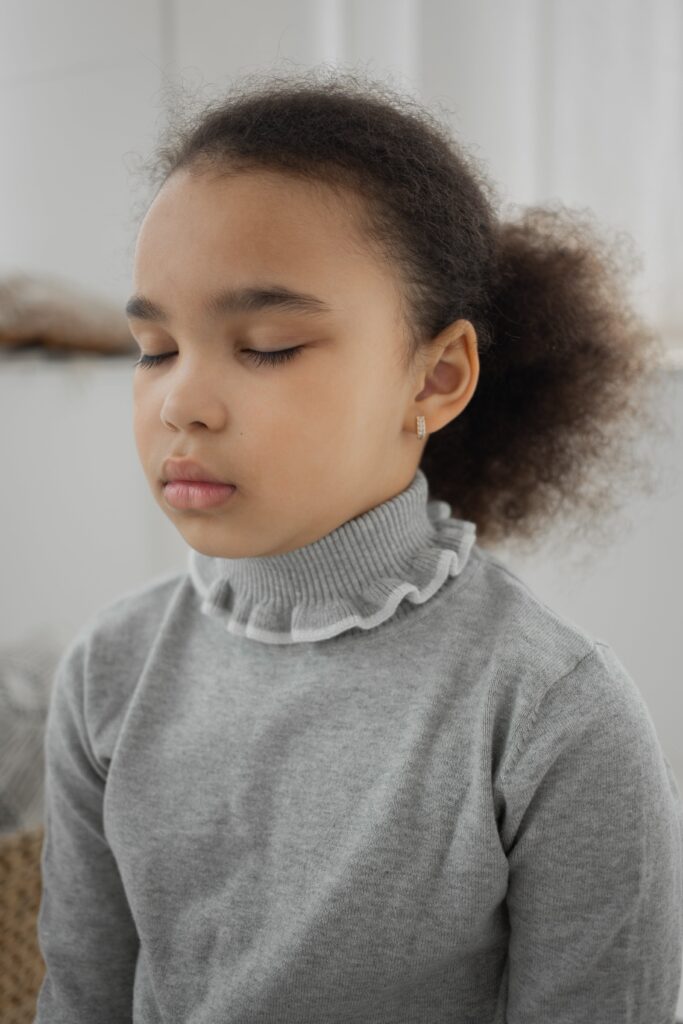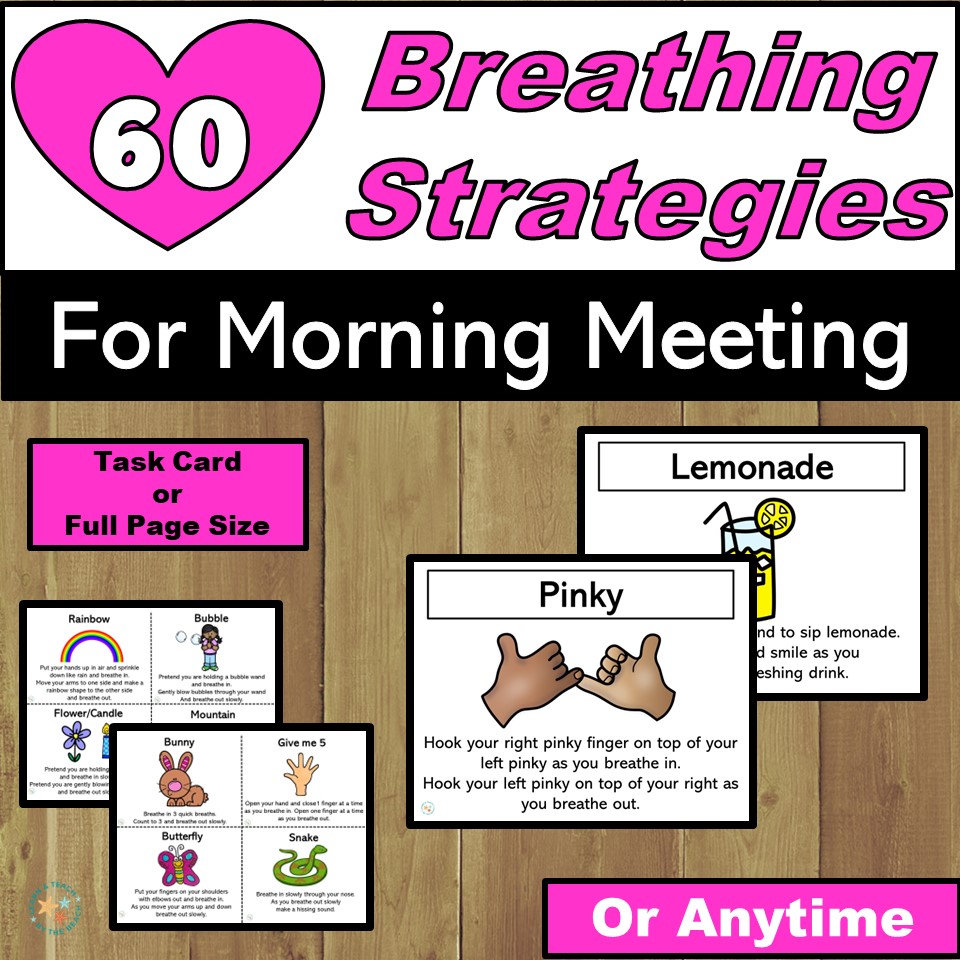Need a quick and easy solution for out of control students?
Get your classroom under control with these easy directions
- Get your students attention and wait for everyone!
- Say “Mindful Breathing Break -put your hands on your tummy”
- Demonstrate with your hands on your stomach
- Say “Breathe in” and count 1, 2, 3 and slowly inhale
- Say “Breathe out” and count 1, 2, 3 and slowly exhale
- Repeat 2 more times or more if necessary.
- Students sit down calmly
- Ask students how they feel
Why does this work?
When you take a deep breath, your brain tells your body to relax. Deep mindful breathing slows your heart rate and calms your whole body. Teaching this strategy is easy and students can use it anytime. Providing different strategies to practice can help your students focus even more.
Grab this free sample of breathing strategies. Your students will love the variety of options and you can provide opportunities for mindful breathing throughout the day! Your breathing routines also build a strong classroom community. Read more about developing a positive classroom atmosphere here!
How does mindful breathing help?
- Reduces stress
- Enhances focus and concentration
- Regulates emotions
- Promote mindfulness
- Stress Reduction: Children, just like adults, experience stress. Academic pressures, social interactions, and personal challenges can all contribute to heightened stress levels. Introducing mindful breathing breaks allows students to pause, reset, and refocus.
- Enhanced Focus and Concentration: The ability to concentrate is pivotal for effective learning. Breathing exercises help children enhance their attention spans and improve their ability to concentrate on tasks.
- Emotional Self-Regulation: Breathing breaks can serve as valuable tools for teaching students how to manage their emotions. By encouraging deep, intentional breathing, teachers can help students recognize and control their feelings, leading to improved self-awareness and emotional resilience. When students are equipped with effective self-regulation techniques, disruptive behaviors often decrease.
- Promoting Mindfulness: Teaching mindfulness from an early age can have lasting positive effects on students’ overall well-being. Mindful breathing breaks represent a significant step towards achieving this goal, fostering a generation of well-rounded, emotionally resilient, and mindful individuals.
Buy the full resource and get 60 breathing strategy ideas!
Supporting you always 💗!










